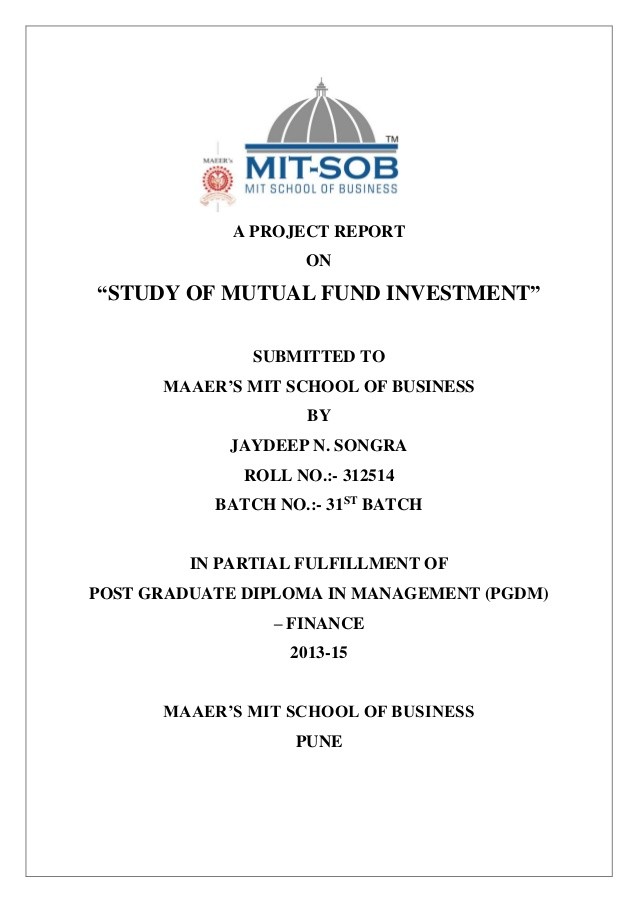To Save MoneyMarket Mutual Funds Scrap Them
Post on: 12 Июнь, 2015 No Comment

4 Jun 13, 2012 6:30 PM EDT
Long-overdue rules to prevent a repeat of the 2008 run on money-market mutual funds may not be passed this year, thanks to a provision just inserted in a funding bill before Congress by Representative Jo Ann Emerson. Republican of Missouri.
This is unfortunate but unsurprising. Because real reforms jeopardize the very existence of money-market funds, opposition from the industry has been fierce. There is a way out, however: Pairing such reforms with a creative alternative to the current model could make the demise of money funds palatable even to their sponsors.
We propose extending a government program called TreasuryDirect. which allows investors to buy Treasury securities directly from the government in accounts held with the Treasury Department. Banks and brokerages should embed a more user-friendly version of TreasuryDirect in their accounts — — call it a (new) U.S. Money Fund.
To appreciate the merits of this alternative, it’s useful to review some history.
Checkered Past
Money-market funds were created in the early 1970s when inflation soared but banks weren’t allowed to pay interest on checking accounts. Initially, money-market funds bought only Treasury bills. Later, as funds competed for customers by promising higher yields, they loaded up on riskier commercial paper, the unsecured short-term securities that businesses often issue to meet day-to-day needs.
Money funds had the same look and feel as traditional checking accounts — customers could write checks against their balances — but offered higher yields because they enjoyed several cost advantages. They didn’t have to pay for deposit insurance or hold capital in reserve, they weren’t subject to regular examination by multiple regulators, and they didn’t have to comply with most consumer-protection rules or demonstrate their contribution to the local community. Relying on ratings companies to identify investment-grade assets eliminated the costs of loan officers and credit committees.
True, the accounts weren’t insured. But they did carry the regulatory imprimatur of the Securities and Exchange Commission.
As more and more people moved into money markets, banks lobbied for and eventually secured the right to offer their own funds. By 1985, balances in money-market funds dwarfed those in traditional bank accounts. Money-market funds were thought to be “unrunnable,” because all withdrawals could be met by selling the assets of the fund.
That illusion was shattered in September 2008. The pioneering Reserve Fund had large holdings of commercial paper issued by Lehman Brothers Holdings Inc. The failure of Lehman triggered redemption requests for more than $20 billion, but less than half that amount could be honored by selling assets since the markets were frozen.
Redemption requests then surged at all money-market funds, but they could only sell their safest and shortest-term securities. The commercial-paper market froze. Fears of an economic collapse prompted the government to guarantee the previously uninsured funds.
Today, risky investments by money-market funds remain a public menace. The Federal Reserve’s policy of maintaining short-term interest rates of almost zero has impelled a desperate search for yield. Until quite recently, dodgy European bank paper constituted about 45 percent of the assets of the large money-market funds in the U.S. Although most funds have since reduced this exposure, the experience of 2008 demonstrates that they won’t always have such clear warnings or the time to divest in the future.
Two Reforms
Unfortunately, it’s hard to reduce the risks without threatening the existence of the entire business. SEC staff have proposed removing a special exemption for money funds, which now enables their valuations to appear fixed, so their prices instead would float with the market value of their assets, as happens with traditional mutual funds. But floating prices could cause customers to flee because each withdrawal would become a taxable trade. And why keep cash in funds whose value fluctuates by the day instead of in a bank account insured by the Federal Deposit Insurance Corp.
Another proposal would require funds to set aside capital to cushion losses. Historically, fund sponsors have chosen to make investors whole after losses were incurred. But requiring funds to infuse capital upfront could force sponsors out of the business, since many are already operating at a loss.
Why are fund sponsors fighting so hard to stay in an unprofitable business? Industry giants, such as Fidelity and Vanguard, subsidize their money funds to support their mainstays: stocks, bonds and mutual funds. These core products are more conveniently sold when customers can buy them with cash in an in-house money-market fund.
This helps explain why sponsors should accept — even welcome — reforms that could ruin the traditional market-market fund business. A broader but simpler version of TreasuryDirect would protect the true interests of fund sponsors and their customers, if floating prices and capital requirements displaced the current system.
Today, TreasuryDirect accounts provide a safe but limited substitute for private brokerage accounts: They can be used to buy and sell only Treasury notes and bonds.

The new U.S. Money Funds that we propose would complement, rather than compete with, private accounts. They would be opened within conventional banking or asset-management accounts and used in exactly the same way as money-market funds. Nothing would change in how customers trade stocks and bonds except that the funds would flow in and out of the U.S. Money Fund. Banks in good standing with regulators would have the right to borrow the funds in “their” accounts from the Treasury under a formula that replicates current reserve and capital requirements.
From the perspective of the bank and its customers, a TreasuryDirect account would be indistinguishable from any other checking account.
Increased Lending
The proposal wouldn’t, as some might argue, hurt real businesses by preventing them from selling commercial paper to money-market funds. Banks and other financial intermediaries have long dominated the issuance of commercial paper: The share issued by industrial companies fell to a fifth of the total 10 years ago and has stayed at roughly the same level ever since. Giving banks the right to borrow against the proposed U.S. Money Fund balances could actually increase real commercial lending.
True, money-fund companies would lose whatever profits they might one day make if the current money-market-fund business ever becomes profitable again. But against this possibility stands the certainty that they would never again face panicky withdrawals in times of stress, never have to make good on losses if the value of fund assets fell, and never expose taxpayers to another bailout.
The U.S. Senate Banking Committee is expected to hold a hearing on reforming money-market funds next week. With memories of the 2008 debacle still fresh, and interest rates so low, no one has a compelling interest in the status quo. Why wait for the next crisis?
(Amar Bhide is a professor at the Fletcher School of Law and Diplomacy at Tufts University and the author of “A Call for Judgment: Sensible Finance for a Dynamic Economy.” Christopher Papagianis is managing director of Economics21, a nonpartisan research institute, and a former special assistant for domestic policy to President George W. Bush. The opinions expressed are their own.)
Read more opinion online from Bloomberg View. Subscribe to receive a daily e-mail highlighting new View columns, editorials and op-ed articles.
To contact the writers of this article: Christopher Papagianis at papagianis@economics21.org Amar Bhide at amar@bhide.net
To contact the editor responsible for this article: Timothy Lavin at tlavin1@bloomberg.net














